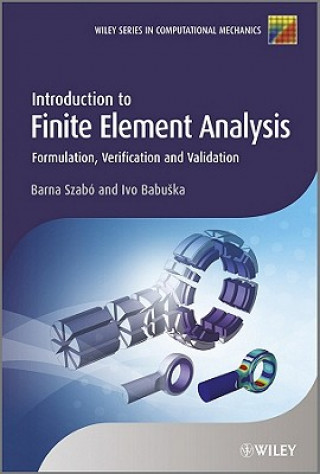
Livrare
Consilier de cumpărături





Nu se pretează? Nu contează! La noi puteți returna bunurile în 30 de zile
 Voucher cadou
orice valoare
Voucher cadou
orice valoare
Cu un voucher cadou nu veți da greș. În schimbul voucherului, destinatarul își poate alege orice din oferta noastră.
Introduction to Finite Element Analysis - Formulation, Verification and Validation
 engleză
engleză
 369 b
369 b
30 de zile pentru retur bunuri
Ar putea de asemenea, să te intereseze


When using numerical simulation to make a decision, how can its reliability be determined? What are the common pitfalls and mistakes when assessing the trustworthiness of computed information, and how can they be avoided?§Whenever numerical simulation is employed in connection with engineering decision-making, there is an implied expectation of reliability: one cannot base decisions on computed information without believing that information is reliable enough to support those decisions. Using mathematical models to show the reliability of computer-generated information is an essential part of any modelling effort.§Giving users of finite element analysis (FEA) software an introduction to verification and validation procedures, this book thoroughly covers the fundamentals of assuring reliability in numerical simulation. The renowned authors systematically guide readers through the basic theory and algorithmic structure of the finite element method, using helpful examples and exercises throughout.§Delivers the tools needed to have a working knowledge of the finite element method§Illustrates the concepts and procedures of verification and validation§Explains the process of conceptualization supported by virtual experimentation§Describes the convergence characteristics of the h-, p- and hp-methods§Covers the hierarchic view of mathematical models and finite element spaces§Uses examples and exercises which illustrate the techniques and procedures of quality assurance§Ideal for mechanical and structural engineering students, practicing engineers and applied mathematicians§Includes parameter-controlled examples of solved problems in a companion website (www.wiley.com/go/szabo)Introduction to Finite Element Analysis: Formulation, Verification and Validation§By§Barna Szabó, Washington University, USA§Ivo Babuska, The University of Texas at Austin, USA§WILEY SERIES IN COMPUTATIONAL MECHANICS§When using numerical simulation to make a decision, how can its reliability be determined? What are the common pitfalls and mistakes when assessing the trustworthiness of computed information, and how can they be avoided?§Whenever numerical simulation is employed in connection with engineering decision-making, there is an implied expectation of reliability: one cannot base decisions on computed information without believing that information is reliable enough to support those decisions. Using mathematical models to show the reliability of computer-generated information is an essential part of any modelling effort.§Giving users of finite element analysis (FEA) software an introduction to verification and validation procedures, this book thoroughly covers the fundamentals of assuring reliability in numerical simulation. The renowned authors systematically guide readers through the basic theory and algorithmic structure of the finite element method, using helpful examples and exercises throughout.§Delivers the tools needed to have a working knowledge of the finite element method§Illustrates the concepts and procedures of verification and validation§Explains the process of conceptualization supported by virtual experimentation§Describes the convergence characteristics of the h-, p- and hp-methods§Covers the hierarchic view of mathematical models and finite element spaces§Uses examples and exercises which illustrate the techniques and procedures of quality assurance§Ideal for mechanical and structural engineering students, practicing engineers and applied mathematicians§Includes parameter-controlled examples of solved problems in a companion website (www.wiley.com/go/szabo)
Informații despre carte
 engleză
engleză




 Cum să cumpăr
Cum să cumpăr



























